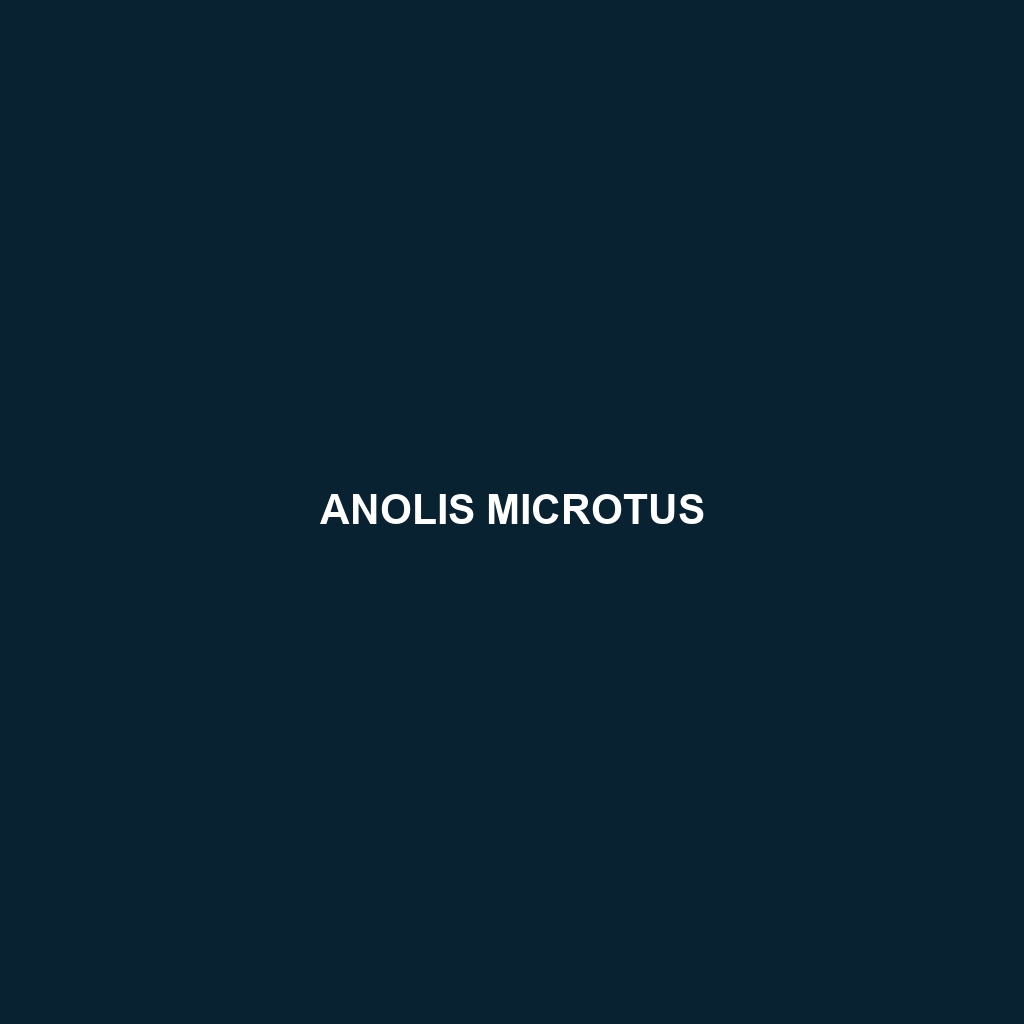Anolis microtus Species Description
Common Name: Anolis microtus
Scientific Name: Anolis microtus
Habitat
Anolis microtus is primarily found in the lush subtropical and tropical forests of the Caribbean islands, particularly in areas such as Puerto Rico and the Virgin Islands. These lizards thrive in humid environments, often residing in leaf litter, shrubs, and the lower branches of trees. They are well-adapted to a variety of microhabitats, which include both disturbed and undisturbed forest areas.
Physical Characteristics
Anolis microtus exhibits a small to medium size, typically measuring around 5 to 7 inches in total length. This species features a distinctive coloration that ranges from green to brown, allowing it to blend seamlessly into its natural surroundings. Notable characteristics include elongated bodies and long, tapering tails, which aid in balance as they navigate through their arboreal habitat. Their slender limbs are equipped with adhesive toe pads, enhancing their climbing prowess.
Behavior
Anolis microtus is known for its territorial behaviors, with males often engaging in displays to attract females and ward off rival males. These lizards are diurnal, primarily active during the daytime, and can often be spotted basking on branches or leaves. They display excellent climbing abilities and are adept at camouflage due to their coloration, which makes them less visible to predators.
Diet
The diet of Anolis microtus consists mainly of small insects and arthropods. Common food sources include ants, beetles, and flies. Additionally, they may consume nectar and plant material, exhibiting an omnivorous feeding habit that contributes to their adaptability in varied environments. Their hunting strategy often involves ambushing prey from a vantage point.
Reproduction
During the breeding season, which occurs in the warmer months, male Anolis microtus will engage in elaborate courtship displays that include head bobs and dewlaps extension. Females lay eggs in small clutches, typically 1 to 3 eggs per deposition, which are usually buried in soil or leaf litter for incubation. The hatchlings are independent from birth, experiencing rapid growth in their early stages.
Conservation Status
Currently, Anolis microtus is classified as a species of Least Concern by the IUCN Red List; however, habitat destruction and climate change pose threats to their populations. Conservation efforts are essential to monitor their habitats and mitigate environmental impacts that may challenge their survival.
Interesting Facts
Anolis microtus is also known for its social behavior; males often establish hierarchy through visual displays rather than physical confrontations. Additionally, these lizards exhibit remarkable adaptability, having been observed thriving in urban areas, which sets them apart from many other lizard species.
Role in Ecosystem
Anolis microtus plays a crucial role in its ecosystem as both a predator and prey. By controlling insect populations, they contribute to the ecological balance, while serving as a food source for larger predators, thus integrating into the food web of their habitat. Their presence indicates a healthy environmental condition, making them significant bioindicators.
